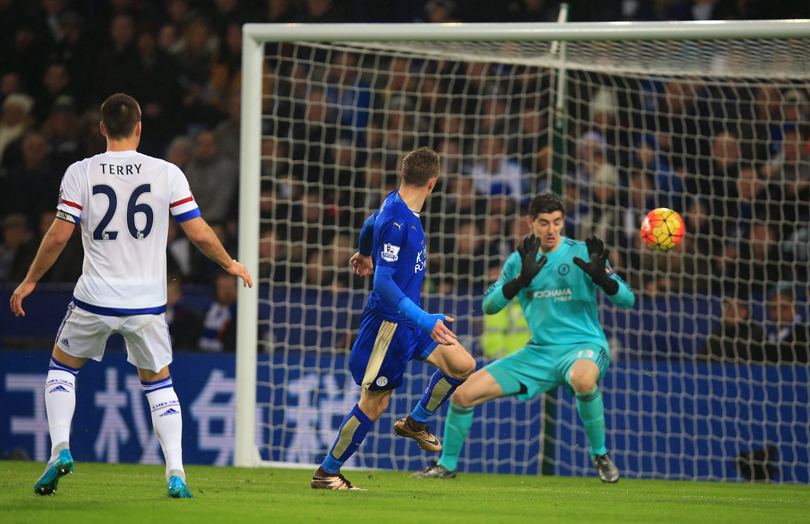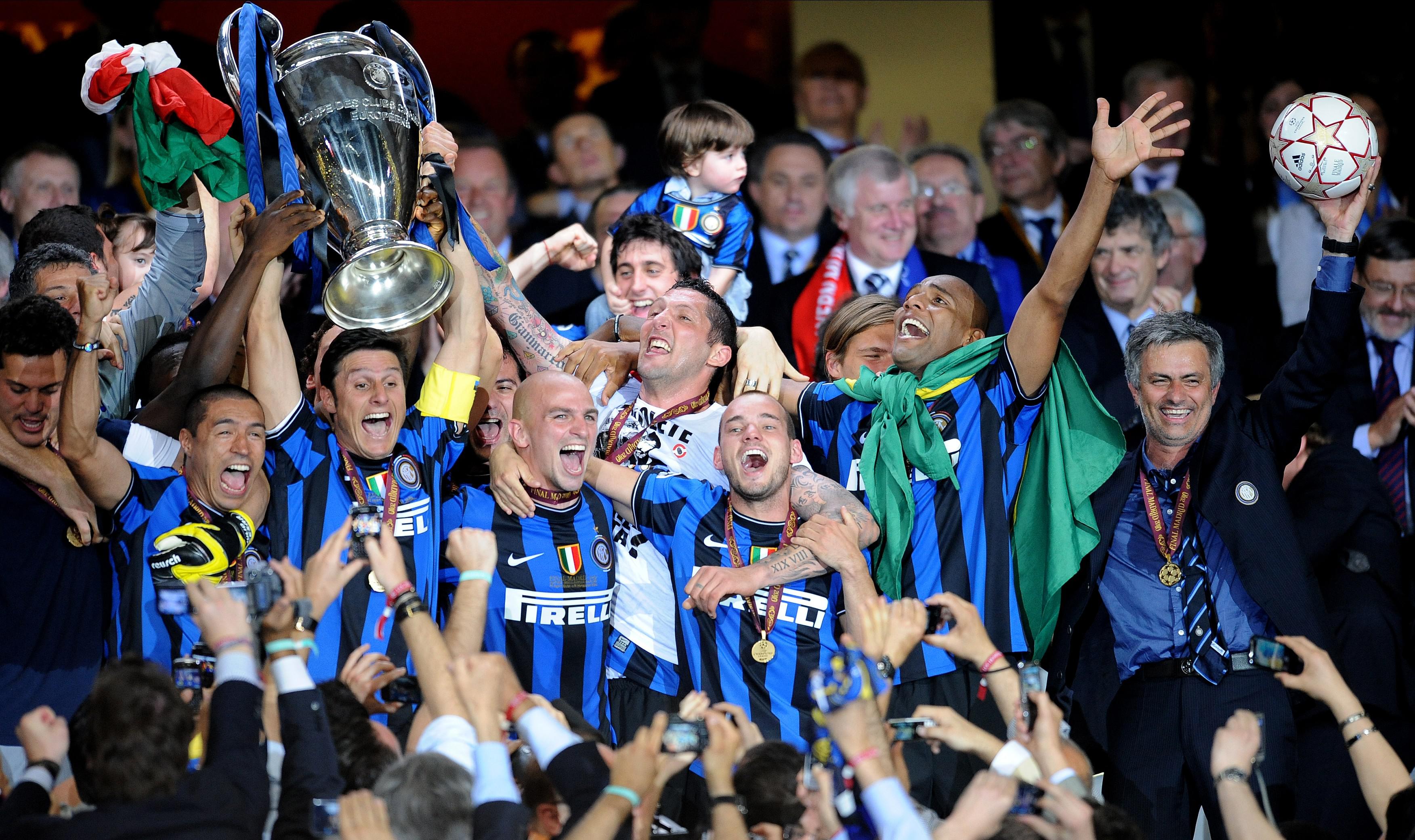Revealed: Why this Premier League season is the most bonkers yet
The return of the beloved 4-4-2 is revolutionising the top flight – but not as we once knew it, writes Alex Keble…

As we pass the halfway point of the 2015/16 Premier League season, fans, pundits and players alike are scratching their heads. Relegation candidates are cantering towards the Champions League; super clubs are looking meek and restrained; newly promoted sides are dismantling long-established giants with fluid attacking football.
And 4-4-2 has returned to the mainstream.
The league is in a curious state of flux, and though many have shrugged that the chaos is the result of financial levelling, mid-season hindsight tells us that a monumental tactical transition is underway in the Premier League. And while the larger clubs with their respected – but ageing – managers persist with models created in the early noughties, smaller clubs are breaking the cycle by embracing fresher innovations.

Time out tiki-taka
The most extreme example was Vicente del Bosque’s Spain, who famously passed their way to the 2010 World Cup with 1-0 wins in all four of their knockout games
Tiki-taka – yes, that old thing; the Dutch/Spanish hybrid developed by Louis van Gaal at Ajax in the ‘90s and re-mastered by Pep Guardiola at Barcelona – had been the model system for some time. An obsession with control and possession has sucked formations inwards like a swirling plughole, leading to the widespread implementation of 4-2-3-1 and the creation of increasingly intricate systems that reached saturation point with the rise of a 4-6-0. The 'false nine' is the defining buzzphrase of the last 10 years, symbolising the dissolution of the striker and – at least so we thought – the end of 4-4-2.
The most extreme example was Vicente del Bosque’s Spain, who famously passed their way to the 2010 World Cup with 1-0 wins in all four of their knockout games. Our affection for the style has gradually waned ever since, and in its place has risen the likes of Jurgen Klopp’s furious gegenpress and counter philosophy: a model designed specifically to exploit the vulnerabilities of possession-obsessed mantras. This change is illustrated perfectly in the marked differences between Spain 2010 and the next World Cup winners, Germany, in 2014.
At its core, the German model demands frantic swarming around the ball but with passing lines designed to maximise the counter-attacking space that develops when the ball is recaptured in dangerous areas. Klopp’s arrival in England is well timed, and coincides with the rise of other clubs refusing to retreat and instead confronting the high-line approach of more tentative opponents.
Get FourFourTwo Newsletter
The best features, fun and footballing quizzes, straight to your inbox every week.
Unlike the guerrilla-style counter of old, Klopp has helped usher in an era of counter-attacking from the front that has unshackled the claustrophobic, possession-based football and helped re-discover huge pockets of space in which to attack.
Countering wins
Possession-based teams are beginning to be out-done by the heavy metal approaches employed elsewhere
In the Premier League, Watford, Leicester, Tottenham, West Ham, Liverpool and Southampton have all adopted this system to varying degrees, while those stuck to the old methods – see Aston Villa, Everton, Swansea and, most notably, Manchester United – are left behind. As a result, possession-based teams are beginning to become out-done by the heavy metal approaches employed elsewhere. Although Barcelona and Bayern Munich have both slightly adapted their models, the main exponents of contemporary counter-attacking football have brought 4-4-2 back into fashion. Leicester in particular have thrived thanks to their terrifying speed on the break.
Atletico Madrid and Juventus have both had great success using the formation – heck, the former toppled Barcelona and Real Madrid with it to win the title in 2014 – and a shadow of their styles can be glimpsed in some of England’s most over-achieving clubs of 2015/16.
For example, West Ham’s 4-4-2 in their recent 2-0 win against Liverpool (who are yet to perfect their system) was an exemplary version of modern counter-attacking football. For the first 45 minutes (injury forced them to abandon this shape in the second half) they squeezed the pitch superbly, pressing high up the pitch to deny Liverpool time to rest in possession, remaining extremely narrow and closing down the ball in mini-swarms.
Mark Noble and Cheikhou Kouyate made 19 tackles and interceptions between them. It’s this battling, high-pressure tweak on counter-attacking football that has helped the Hammers rise to 6th, collecting wins against Liverpool (twice), Arsenal, Manchester City and Chelsea along the way.

Rise of the underdogs
Leicester’s staggering rise from bottom to top in 12 months is testament to the seismic shift in the tactical landscape
Watford’s philosophy is even more aggressive, a territorial charge that frightens opponents into submission. Once the ball is won back, the passing is direct to their frontmen (Troy Deeney and Odion Ighalo have scored or assisted 22 of their 25 goals this season – 88%) and doesn’t involve aimless long balls or pouncing counters from deep. They push forward as a block, stamping out their opponents’ move at its source.

But the best example of the high-press 4-4-2 is Leicester, whose staggering rise from bottom to top in 12 months is testament to the seismic shift in the tactical landscape. Claudio Ranieri's men build rapidly, distributing the ball to the flanks, hurling crosses into the box, or looking to release Jamie Vardy in behind the defence whenever possible.
For all intents and purposes, it looks remarkably similar to the swashbuckling approach of Alex Ferguson at Manchester United.

The new breed
Firstly, the athletic refinement of the modern sportsperson is such that constant running is possible
But there are two crucial differences between the revived 4-4-2 and the traditional English model. Both help to explain why it has returned to the modern game, despite the increasing congestion of central midfield (most tiki-taka offshoots use inverted wingers to overload the centre and a high backline, creating an increasingly claustrophobic pitch that squashes play).
Firstly, the athletic refinement of the modern sportsperson is such that constant running is possible. Just as this gave rise to Pep’s Barcelona vision, so too has it allowed just four midfielders to swarm and shuffle with enough energy to close out multiple opponents simultaneously. None of the aforementioned teams would be successful without a player like N’Golo Kante, Kouyate or Etienne Capoue flitting around in the middle.

And secondly, since these increased fitness levels have allowed players to perform several roles at once, the second striker drops back into midfield to help out; in each case it is more of a 4-4-2/4-5-1 hybrid. Troy Deeney, Shinji Okazaki and Enner Valencia frequently play in this double position.

Chicharito’s turn
Now, in a high-counter 4-4-2 at Bayer Leverkusen, the Mexican is thriving
It wasn't long ago that the striker was said to be dying out; the attributes of the poacher – quick, instinctive, agile – were too specialised and individualistic to function as part of the pass-and-move collective. But the 4-4-2 has facilitated their triumphant returns, and indeed the evolution of the tactical zeitgeist is perhaps best summarised in the popularity of one man in particular – Javier Hernandez.
Both Manchester United and Real Madrid understood the rarity of Hernandez’s supreme talents (he has averaged a goal every 128 minutes in his career), but simply couldn’t fit him into their solo striker formations. But now, in a high-counter 4-4-2 at Bayer Leverkusen, the Mexican is thriving. Given the direction tactical trends are moving, Hernandez – so unpopular just a year ago – could soon be one of the most important and sought-after players in Europe.

To return to the Premier League, viewing this bizarre season as the transitional year in which the German model overtakes the Spanish can help shed some light on the madness – all while also helping to explain why home advantage is evaporating.
From the very beginning of the season the top teams struggled for fluency or goals, and though at the time we thought this was simply a matter of waiting for teams to gel, it’s beginning to look like the midfield-packed systems championed by Louis van Gaal & Co. are becoming outdated. Long live FourFourTw– sorry… 4-4-2!
RECOMMENDED
- Loan watch: How the Premier League big guns' future stars are faring
- 10 of the most short-lived transfers ever
- 11 transfers that prove you CAN get value in January
More features every day on FFT.com • Analysis
STATS ZONE Free on iOS • Free on Android
